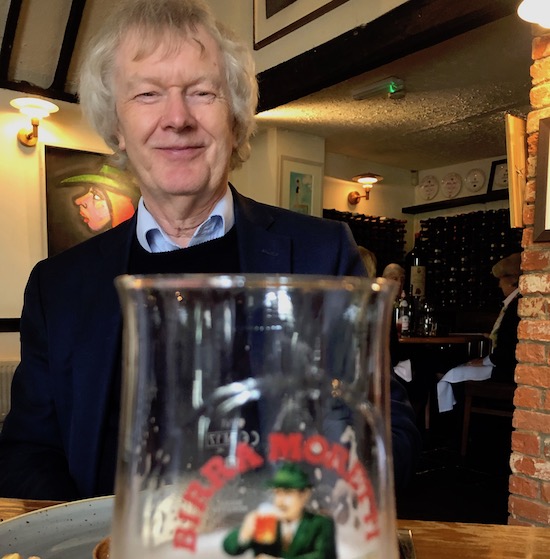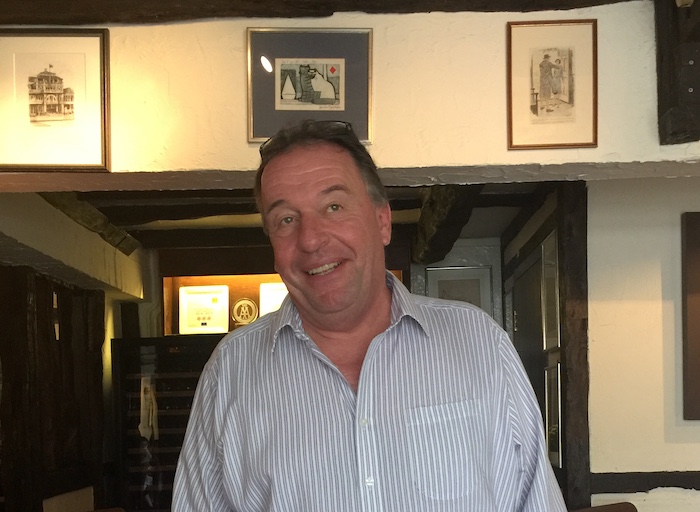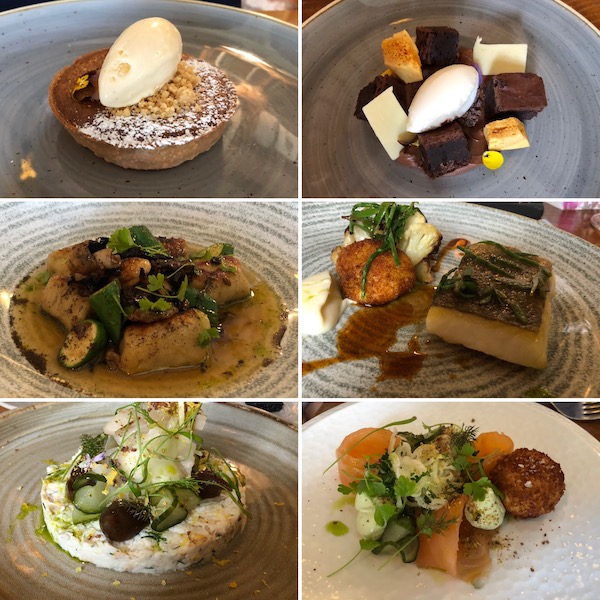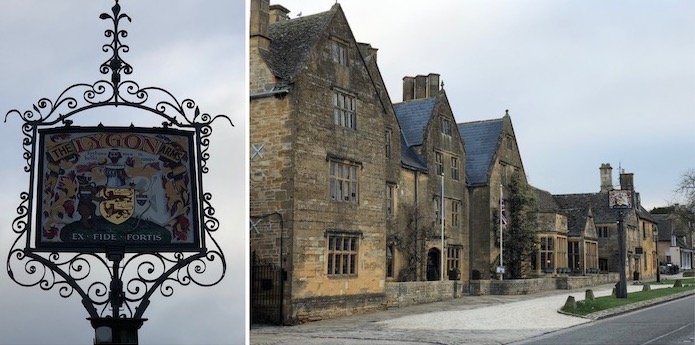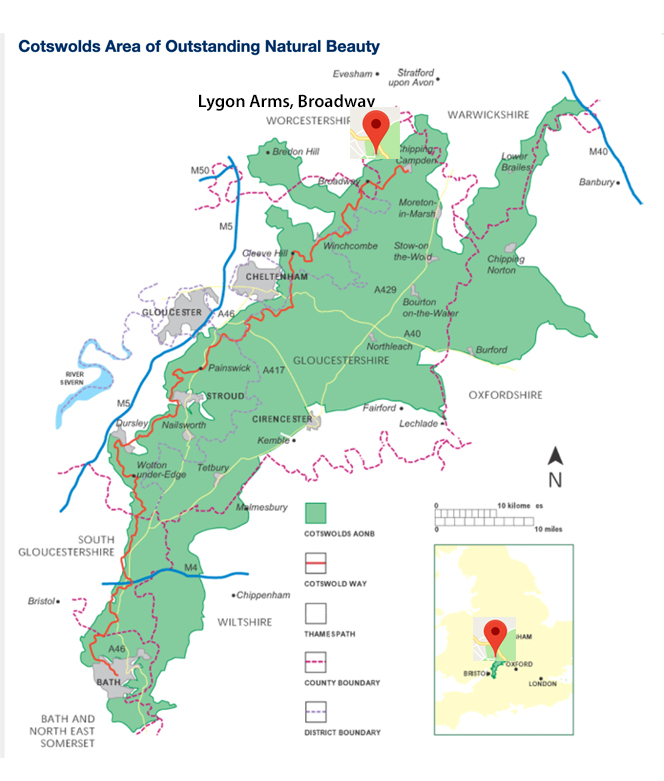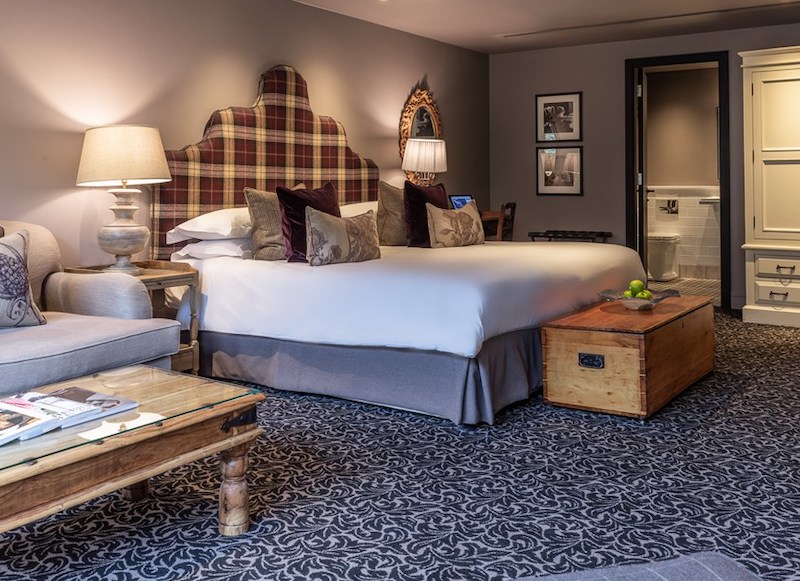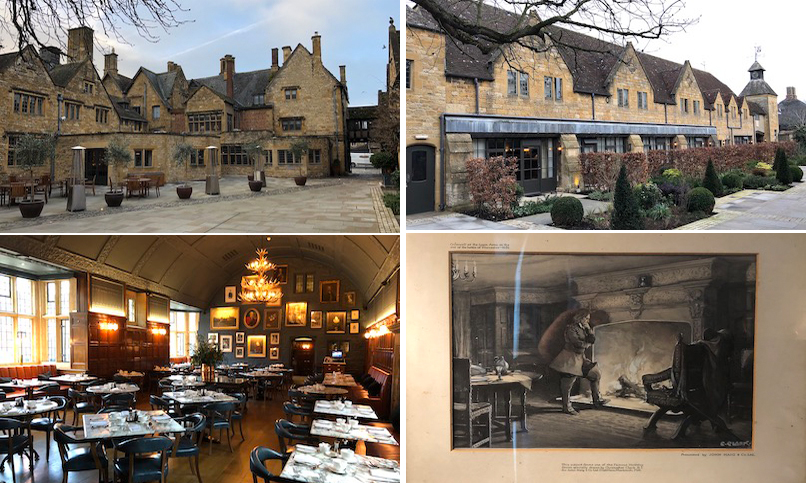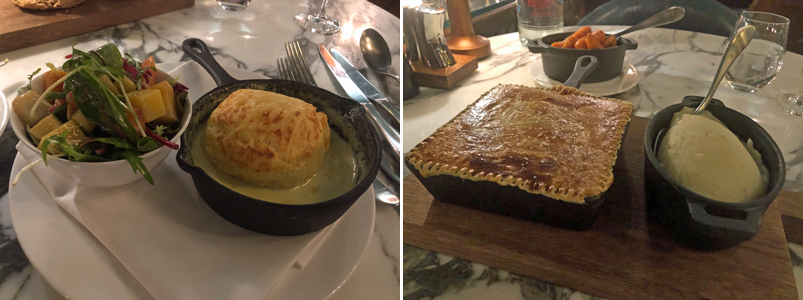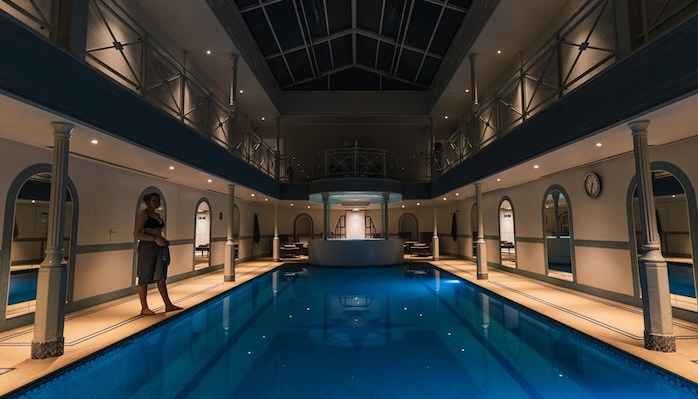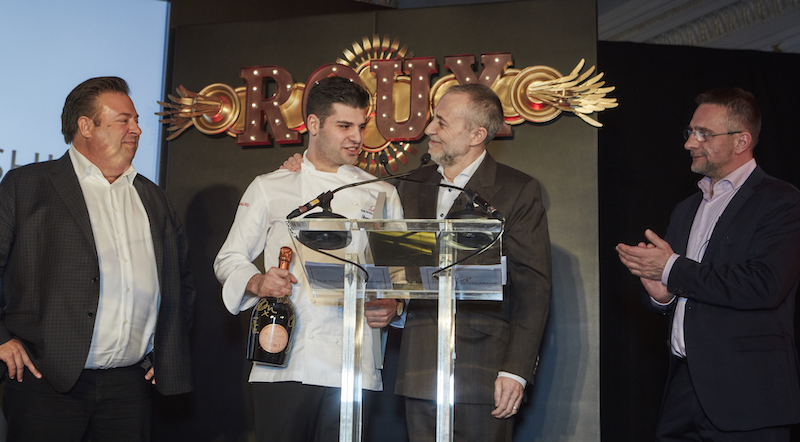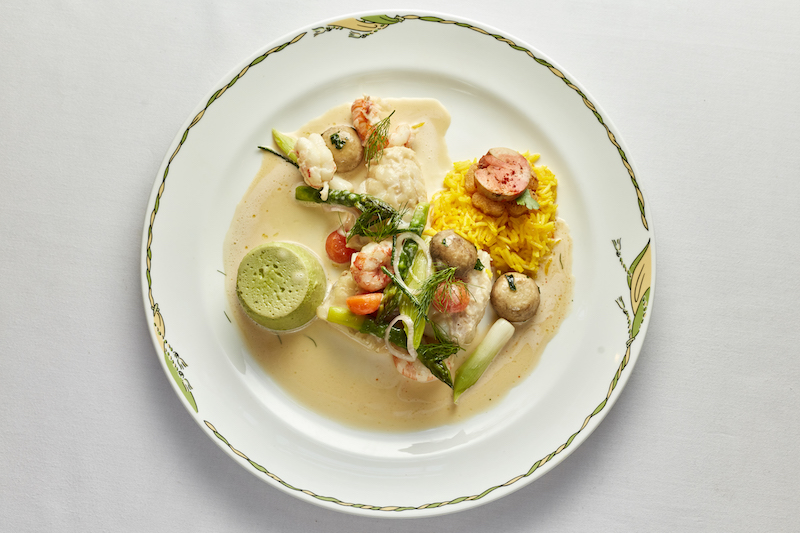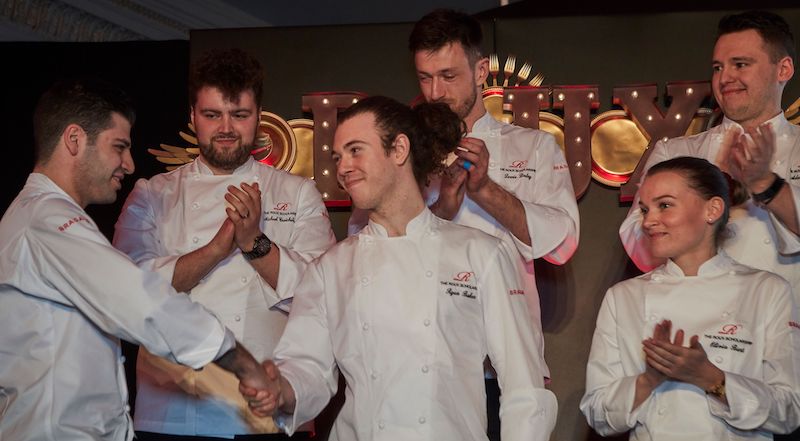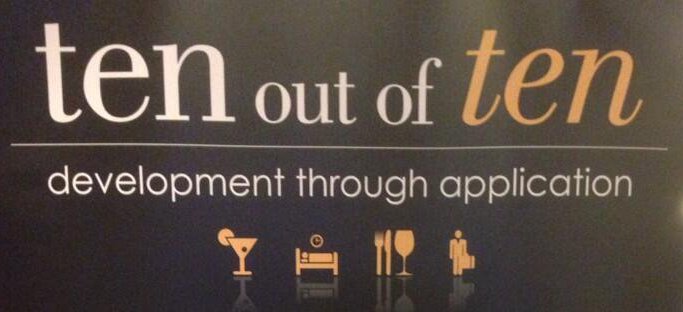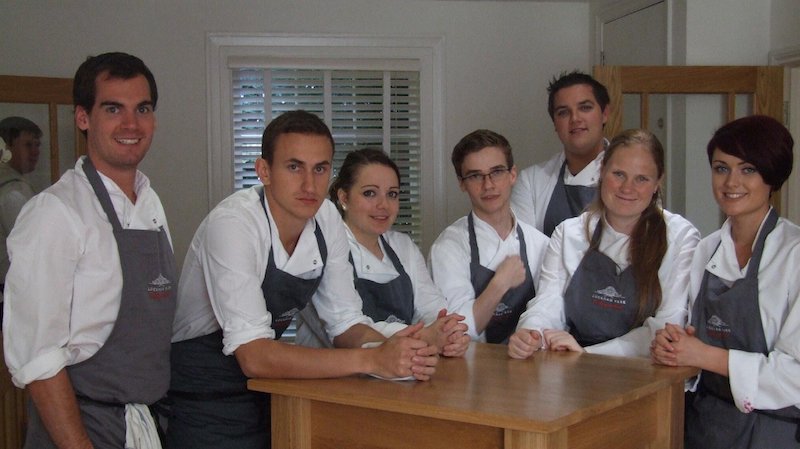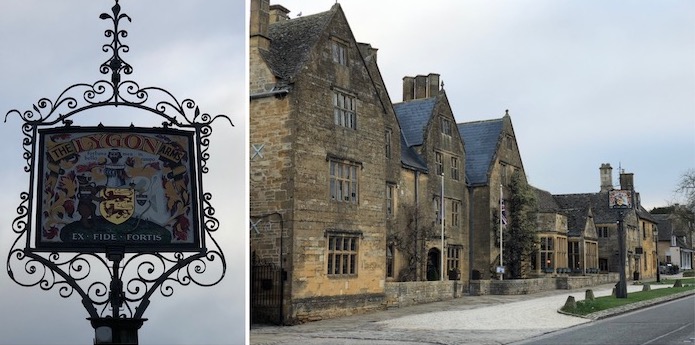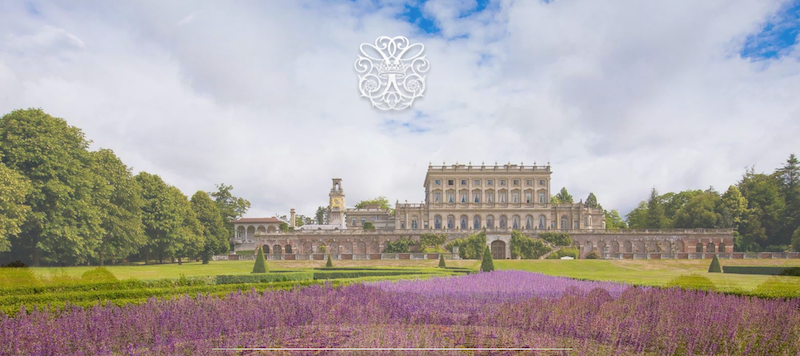
It would appear that the four part “A Very British Country House” Channel 4 TV series aired last September hasn’t done the hotel any harm, perhaps in particular through giving air time to the visit of Meghan Markle before the Royal wedding. Indeed, subsequent business has seen a rise in the numbers of guests and turnover alike. The first three months of the year were a record. In addition, reviews and feedback about the hotel appear to be strong, while business is happily continuing to move in the right direction.
Paul O’Neill fell into cooking by accident before finding his first serious post-college position at Claridges under the iconic mentor John Williams. After a journey that includes an impressive array of hotel kitchens, alongside a career defining success in the 2013 Roux Scholarship, Paul talks candidly about the experiences that have shaped him and led to his position as Executive Chef at Cliveden House hotel.
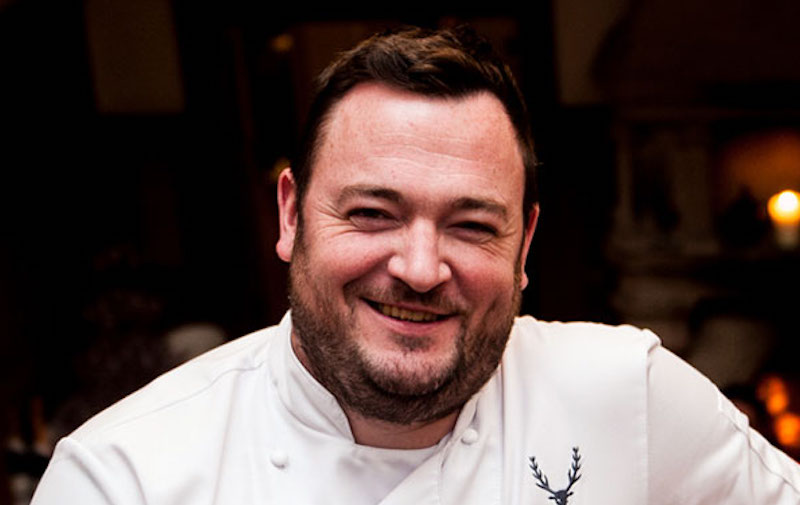
Paul’s childhood was characterised by being fairly self sufficient and independent. His parents were often away, leaving Paul with au pairs. Cooking was an option such that his mother may joke that it meant he wouldn’t go hungry.
Straight from school, Paul enrolled in a catering course at Chichester College and spent weekends working at Chichester Festival Theatre. At 17, he sent his curriculum vitae and a covering letter to a number of Michelin Star standard hotels and restaurants. These included The Hilton on Park Lane, The Dorchester and the independent restaurant Chapter One. Paul went on a staggering ten or so kitchen trials, which proved successful as he ultimately chose a role at Claridges. The size and scope of the brigade at
Claridges had 48 chefs and the kitchens were an incredible hub of activity. It was the perfect experience for any young chef, it wasn’t a case of repetition, as the work was so varied. At Claridges, a chef might be working on canapés for 800, before immediately employed on a function for 250 guests. At evening restaurant service, perhaps the same chef would be on larder before working on room service or sometimes even bar. The main sections Paul contributed to in terms of the restaurant were fish, garnish and larder.
The level of discipline and regimented hierarchy at such a place meant chefs learnt life lessons, as well as how to be a well rounded chef. Paul remembers, “It was in the days when you would go into work punctually, properly attired and clean shaven and you’d happily put in 96 hours a week for £11,000 (no overtime).” The world has changed so much and one wonders whether the development of chefs today is any better for that change.
Having joined in 2002, Paul left Claridges after two and a half years, which was at the same time as John Williams moved to The Ritz Hotel.
After a few roles honing his skillset further, Paul became Senior Sous Chef at Ashdown Park Hotel and Country Club in East Sussex. A 106 bedroom, 4 red star property, popular with weddings and functions as well as a two AA Rosette Restaurant. At the time of Paul joining, Andrew Wilson was head chef. Andrew had worked for Eric Chavot at The Capital and had also taken part in the 2007 Roux Scholarship. Armand Sablon was the Scholar that year having entered from the brigade of André Garrett at Galvin at Windows. In fact, there was quite a network of contacts with experience of The Roux Scholarship.
In 2012, encouraged by Andrew to do so, Paul entered The Roux Scholarship for the first time. Despite not having made it through the initial process of the paper recipe stage, he remained undaunted. Paul entered for a second time in 2013, making it through to the final before being crowned Scholar of that year.

Indeed, the 2013 Roux Scholarship was the televised competition, so before the semi-finals Paul went to Limewood with Angela Hartnett, Luke Holder and James Martin. Some other finalists went to Gleneagles with Andrew Fairlie, while another group went to Padstow with Rick Stein. The week leading up to the final was hectic and an extraordinary experience for Paul. The week started with all the finalist going to Le Gavroche with Michel Roux Jnr. The next day (Tuesday), they were at The Waterside Inn focusing on wine with Diego Masciaga and Alain Roux. The final three days were spent with Michel & Robyn Roux in Switzerland. “I have a wonderful memory of eating charcuterie and drinking wine with Michel and Robyn,” reflects Paul. The final was to be on the following Monday.
In terms of the final, Paul suggests a finalist is better off practising and learning techniques than trying to research classic recipes. There is a 90% chance you won’t be lucky enough to have studied the chosen dish. So it is far more important to be skilled in classic cooking techniques. These may include filleting a whole flat fish and sowing it up, trussing a bird, or how to debone and ballotine a bird and so on. Paul describes the overall experience as one of the greatest of his life, “the support of the whole ‘Roux Family’ was and continues to be, incredible,” suggests Paul
Paul took his winners stage at the Michelin three star Restaurant Pierre Gagnaire in Paris. While working at the
To demonstrate Paul’s natural work ethic and dedication, after a couple of weeks in Paris, he found that Pierre Gagnaire’s main
This went well, so that when returning to Pierre Gagnaire’s Michelin three star restaurant kitchen, he found himself on the sauce section. Such a compliment reflected the respect gained by Paul over a short space of time as a talented and accomplished chef. It also spoke volumes for the quality and reputation of the Roux Scholarship. Paul remembers, “Part of gaining respect also meant knuckling down and working along side maybe 5 other stagiaires present in any given week.” The stage was three months in total, which proved a wonderful and career changing experience.
Paul stayed a further year at Ashdown Park, repaying their faith with his loyalty. The next role was to be the AA five gold star restaurant with rooms called Berwick Lodge in Bristol, where he remained in his first head chef role for over three years. During this time, André Garrett contacted Paul, when he was looking for a head chef at Cliveden House. With so much quality hotel background, Paul was ideal for the role. A key decisive attribute of Paul’s was to multi-task and this worked well given the number of outlets that the main kitchen at Cliveden House serves. Working and learning under André Garrett was a great benefit, allowing Paul to understand how to deliver the product day in day out, service in service out.
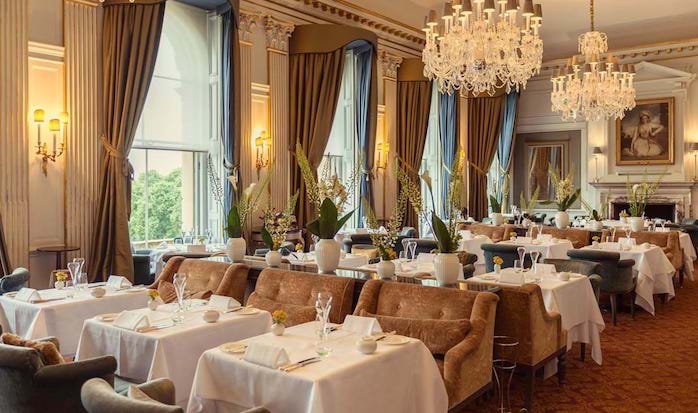
When André found it was time to move on, Paul was delighted to have the opportunity to take over the Executive Head Chef role at Cliveden House. Since the turn of 2019, Paul has found the change fairly seamless and been able to hit the ground running.
In terms of the main dining room, the focus remains on obtaining the best possible produce before applying his cooking philosophy. The mantra is to keep it simple through managing three or four ingredients on a plate. The rule is typically to make the most of the flavours by presenting ingredients in different forms to provide complementary and contrasting tastes and textures.
The overall dish must not hark back to those days when chefs added, added and added some more and sometimes didn’t know when to stop. Paul suggests that the beauty of food is in the simplicity of strong natural flavours combining and enhancing in their own right. He suggests an explanation for a decade or so long trend from 2005, where chefs would over complicate or over elaborate, “came from the online explosion in knowledge and information.” Perhaps also customers and chefs were made more health conscious, in other words, less butter and cream. In addition, encouraged by social media imagery, chefs tended to deliver an excessive appearance of complexity.
The main dining room at Cliveden House offers a capacity of 70 covers and with a few relays may hit 80 covers. On special days, like Mother’s Day, the hotel may open the adjacent French Dining Room to take up to 90 or more guests.
The hotel kitchens brigade numbers 26 which covers a significant number of areas. To give an idea of the workload, the hotel may have a wedding with the wedding breakfast at 2.30pm, a further function in The French Dining Room at 7.30pm. In addition, mid-afternoon may see afternoon teas before covers in the main dining room for dinner. The main kitchen in the basement services all these requirements. Paul feels that the hotel kitchen manage it well, people don’t tend to wait too long and he’s confident of quality and consistency.
Being aware of the trends of less formal lunch dining, the main dining room is now only open for lunch on Sundays with the rest of the week being a popular choice for afternoon tea. The accent is on the overall guest experience (including residents) – the Great Hall is ideal for arriving guests to have a reception space or for existing guests to simply relax.
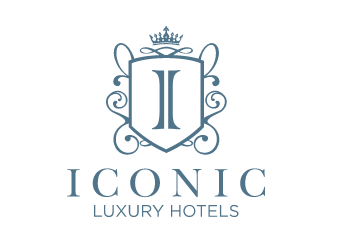
As part of the Iconic Luxury Hotels Group, Cliveden House is part of a wider brand identity. Part of this identity are the ‘Iconic Dishes’ that span the group of Chewton Glen, Cliveden House, Lygon Arms and 11 Cadogan Gardens. There are 14 dishes in total that reflect the highest quality with consistency along with the strongest customer feedback. For example, the truffle risotto, the Dover sole or beef Wellington will appear on the Iconic list of dishes and a minimum number of those will appear on each property menu at any given season.
Paul’s own creative process invariably starts with a spider diagram, centring on the main protein with the web consisting of the complementary and contrasting way in which the element is prepared. For example asparagus may be blanched, shaved, pickled or raw – then what brings that together such as a curd, emulsion, olive oil or dressing and so on. Paul was inspired to create in this way from
The main focus is now to help develop Cliveden House as a food offering that is in the forefront of people’s minds as part of the wider picture of a world-renowned destination hotel. His progress will naturally be followed with interest.





